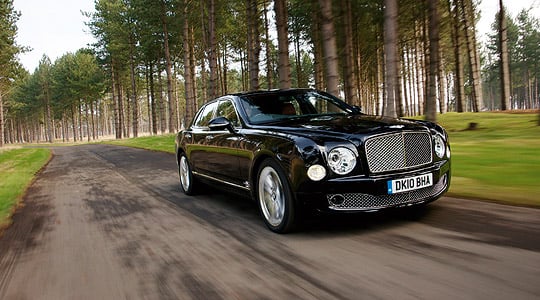
It used to be simple. There was fundamentally one British saloon car at the very top of the luxury-car heap, and it came from Crewe, Cheshire. It had a 6750cc V8 engine of notable effortlessness, and it looked large, imposing and very expensive. True, there were various versions, but the differences were merely changes of emphasis. If you wanted ultimate waftability and sybaritism, you bought the one with the Rolls-Royce badge. If you wanted a bit more pace, more bite, more sporting focus, you bought the Bentley. Same car, different personality.
Then BMW bought the Rolls-Royce part, Volkswagen the Bentley part, and co-operation turned into competition. Not directly, though; the reincarnated Rolls-Royce marque headed yet further upmarket with the Phantom, while Bentley headed in the other direction with the Continental models which boosted Bentley sales to hitherto unseen heights. Thus was an unseemly clash avoided. Now look what has happened. Rolls-Royce has launched the Ghost, a surprisingly sporting car seemingly treading on the territory occupied since the early 1980s by turbocharged Bentleys. A thoroughly modern and disarmingly capable machine, the Ghost made the Bentley Arnage, a dinosaur on wheels, seem hopelessly outclassed. For do not forget that when Rolls-Royce and Bentley divorced, it was Bentley that kept the Crewe factory and the existing designs, including the venerable V8 engine.
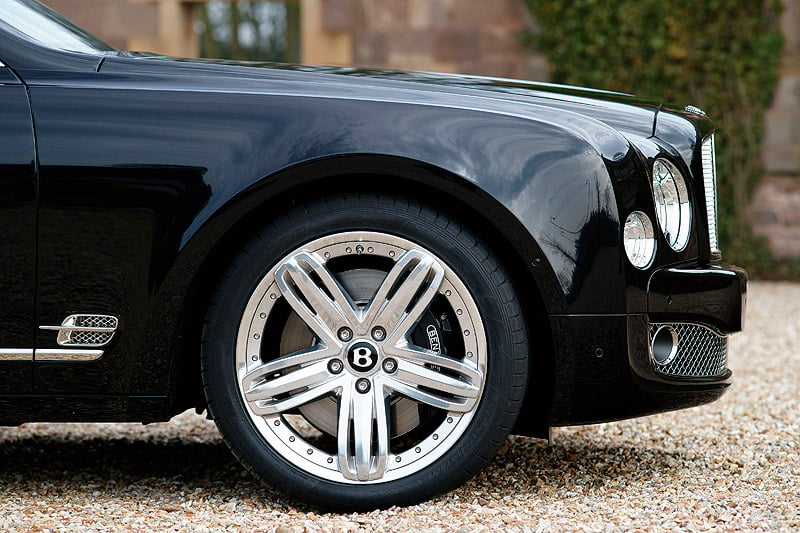
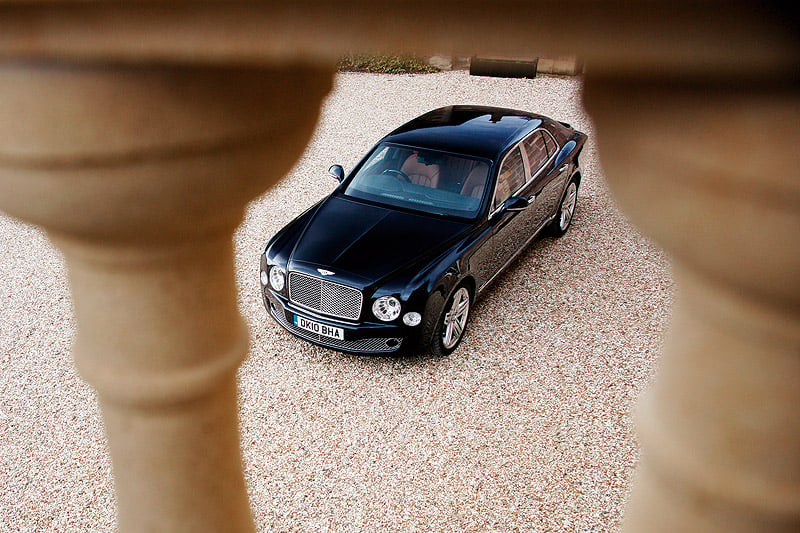
And so to the subject of this test. It’s a full-size Bentley with a twin-turbo V8 of old-fashioned architecture, but a dinosaur it is not. Meet the new Mulsanne: the name is hardly original, being the one used for the generation that brought us the first turbocharged Bentley, but the car is entirely new. Even now, Bentley’s engineering and marketing brains don’t consider the Ghost a direct rival, but it is. Rolls-Royce and Bentley clash head-on for the first time in history.
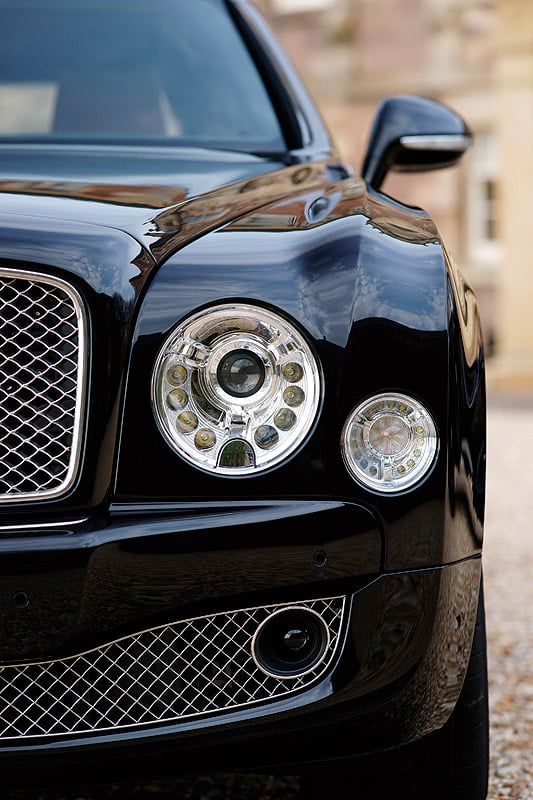
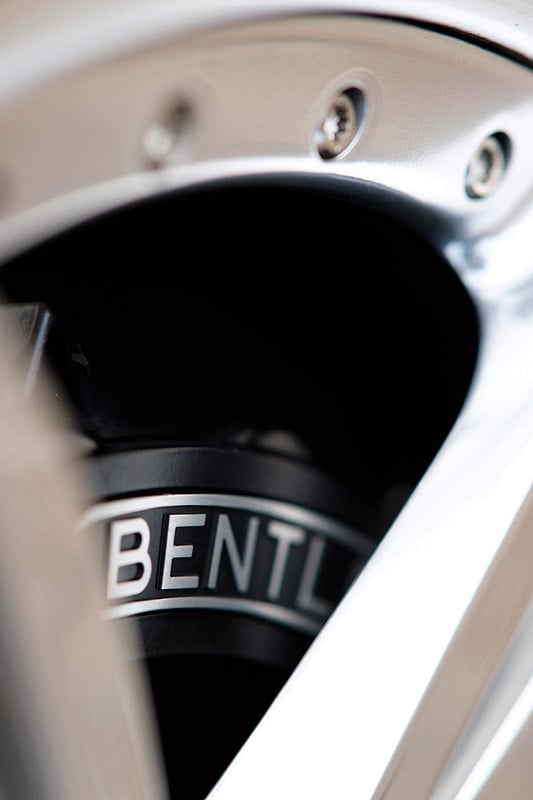
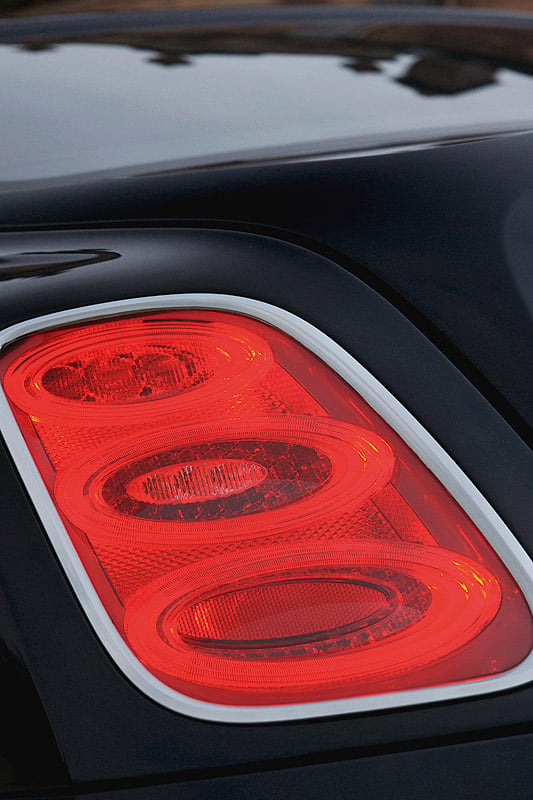
Of these two uber-saloons, it is – perhaps surprisingly – the Mulsanne that is the more bespoke. None of its engine, suspension or structure is shared with any other car, and the design, engineering and manufacture are all done at Crewe. The V8 retains pushrods to operate just two valves per cylinder, just as in the 1959 original, while other common features include aluminium for the block and heads, wedge-shaped combustion chambers and very short exhaust ports. These last two items originally existed, respectively, for compactness and minimal transfer of exhaust heat to the coolant. Nowadays, they happen to be very good for clean combustion and the quick lighting-off of the catalytic converters, so they have stayed. All the engine’s castings and forgings are new, even though the capacity is identical. Fuel consumption and CO2 output drop by around 15 per cent, but the latter is still a slightly embarrassing 393g/km.
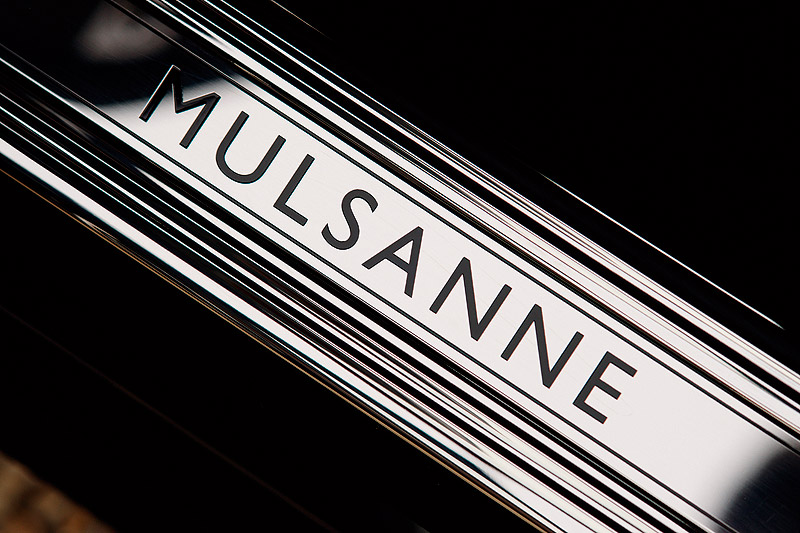
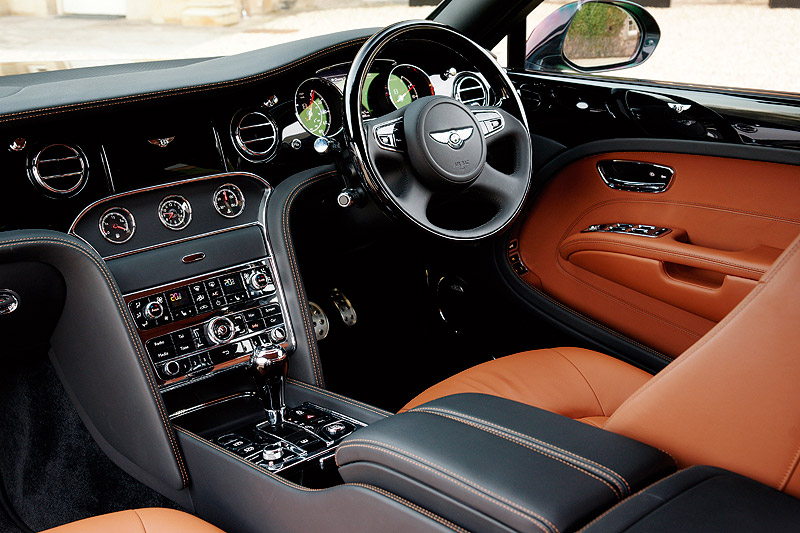
Two key enablers here are variable valve timing, an unusual feature on an engine with just one camshaft, and the ability to shut off two cylinders in each bank when demands on the engine are low. The disabled cylinders’ valves stay closed, so the air trapped within acts like a spring and no energy is lost by needless pumping of air. With all eight cylinders firing, however, there’s a healthy 512bhp on offer (slightly less than the V12 Ghost’s 575bhp) and an epic 752lb ft of torque (equating to 1020Nm – yes, four figures – and usefully more than the Ghost’s 575lb ft). So the engine is classic Bentley with a modern twist. The rest of the Mulsanne continues the theme, its hefty body kicking-up over the rear wheels in the manner of its 1950s ancestors, its nose housing large, round headlights. These contain projector-type xenon lenses for dipped beam, surrounded by a ring of LEDs for main beam. Daytime running lights sit outboard of the headlights.
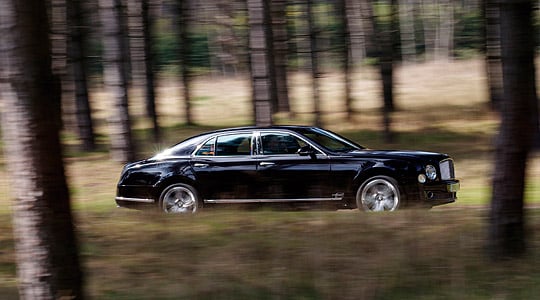
The mesh grille can be surrounded by a chrome shell if you’re feeling retro, and topped by a retractable ‘flying B’ mascot to satisfy a similar craving. The tail looks short, but that’s because the rear pillars sweep back a long way. These pillars’ junction with the roof is brazed and smoothed the old-fashioned way, but there’s contrasting modernity in the bootlid (a composite moulding incorporating several radio antennae) and the front wings (‘superformed’, that is heat-pressed, alumunium able to reach a shape and depth impossible by conventional means). Trad meets modern inside, too. Of course, no material here looks like anything it is not, except that you might not expect the buttons to be made of black glass. There’s a leather-lined iPod tray and, if the standard 14-speaker stereo is insufficient, you can have a 20-speaker version by high-end hi-fi specialist Naim, with 2200 Watts on offer. Lustrous wood and supple leather are all around and, of course, there are combinations of both from which to choose, as well as over 100 exterior colours. Or your own bespoke shade of pearlescent pink, if you must.
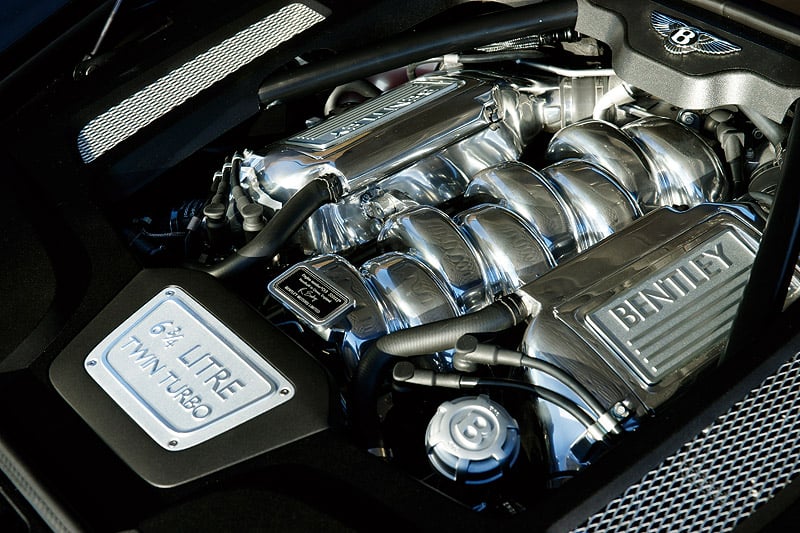
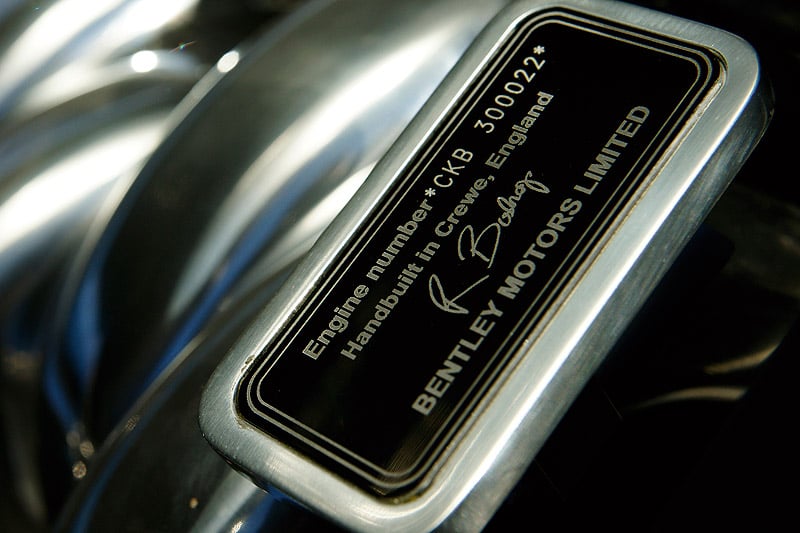
You sit lower than you did in the imperious Arnage, because the floor now sits conventionally below the tops of the sills instead of level with them. The steering wheel is small and thick-rimmed; this and the presence of a rev-counter together give a visual hint of sporting intent. Other driver-focused fitments include paddle-shifts on the steering wheel in the unlikely event that you want to override the new eight-speed automatic transmission, a Sport setting for the same, and a control to alter the air suspension’s damping. The Ghost has none of these: that’s where the R-R and Bentley philosophies diverge. I push the Start button. It’s possible that the engine is now idling, but I can’t be certain. Into Drive, off we waft. The engine has no need, or desire, to rev; maximum power arrives at just 4200rpm, while the gearchanges are all but undetectable. The speedometer and rev-counter scales are rotated 180 degrees from the norm, apparently for reasons of tradition but it’s an annoying affectation. But you barely glance at the rev-counter, concentrating instead on the speedometer, because even 70mph feels no more than a gentle trot.
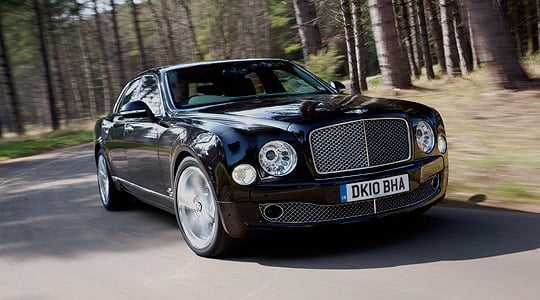
Given its head, the Mulsanne will reach an extraordinary 184mph, having passed 60mph in 5.1sec and 100mph in 11.6. The larger throttle openings required to do this elicit a deep but distant rumble from somewhere up front, but otherwise the engine is near-silent. The switch between four and eight cylinders is undetectable, the overtaking ability immense. There’s a bit too much of a pause before the whoosh unless you’re in Sport, though, sometimes followed by an unseemly lunge as torque demand and supply equilibrate. The Ghost, dare I say it, manages its torque more tidily.
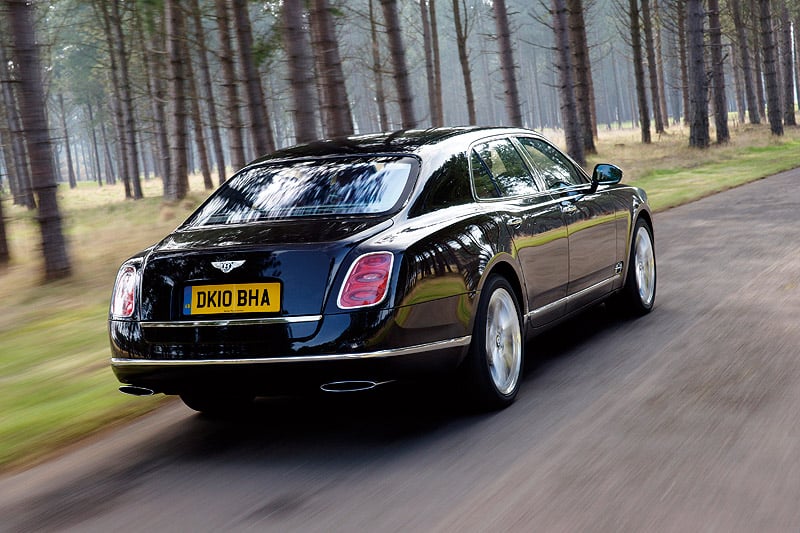
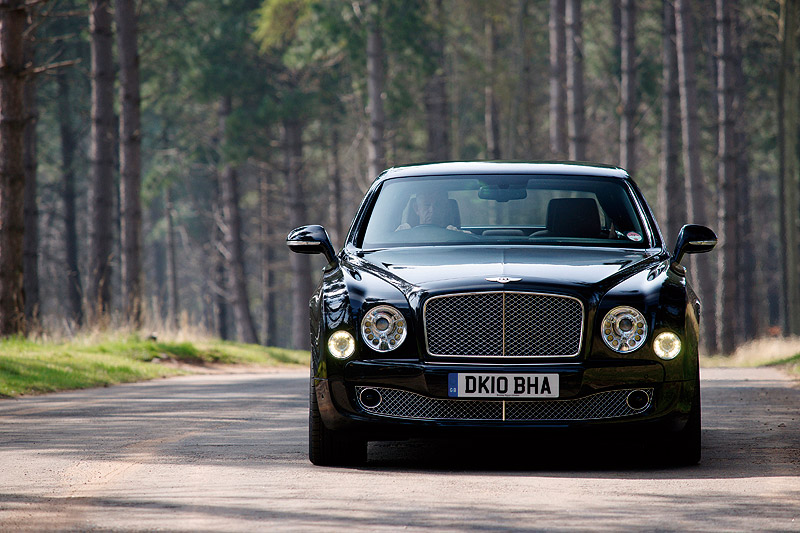
Some large cars ‘shrink around you’ with familiarity. The Mulsanne will never do that; you’re always aware of its 2585kg mass and the road space it occupies, but it can still slice around corners with remarkable enthusiasm. The expected understeer never materialises, and the tyres hang on gamely as they manage the forces. The ride is wonderful, as you would expect, and only slightly compromised by the optional 21in wheels (20in wheels are standard; 265-section tyres are common to both sizes). The Comfort suspension setting is ultra-supple but never induces queasiness, while Sport renders it firm enough to discourage this mode’s use on typically broken British roads. There’s a Custom mode which lets you combine your favourite steering and damping characteristics, such as firm steering and wafting suspension as favoured by engineering director Ulrich Eichhorn. Or you can simply leave it in so-called Bentley mode because, as the name suggests, it suits the car ideally: not too firm, not too vague, able to adapt optimally to changing demands.
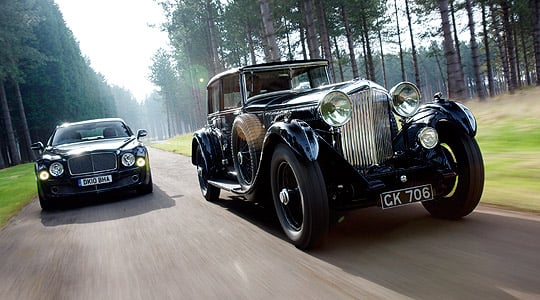
The Arnage used to give the impression of epic forces intent on heading off in their own directions. It was a lovable car but a flawed one. The Mulsanne takes similar ingredients, updates them and makes them work properly together. If you try to imagine what a proper, modern, flagship Bentley should be like, the Mulsanne is exactly that car. It’s a wonderful device: lavish, luxurious and crushingly capable. Trouble is, there’s also the ghost of a Bentley in the car called Ghost, which also happens to be slightly cheaper if such things should matter (£195,840 against £220,000).
But comparisons are odious. Aren’t they?
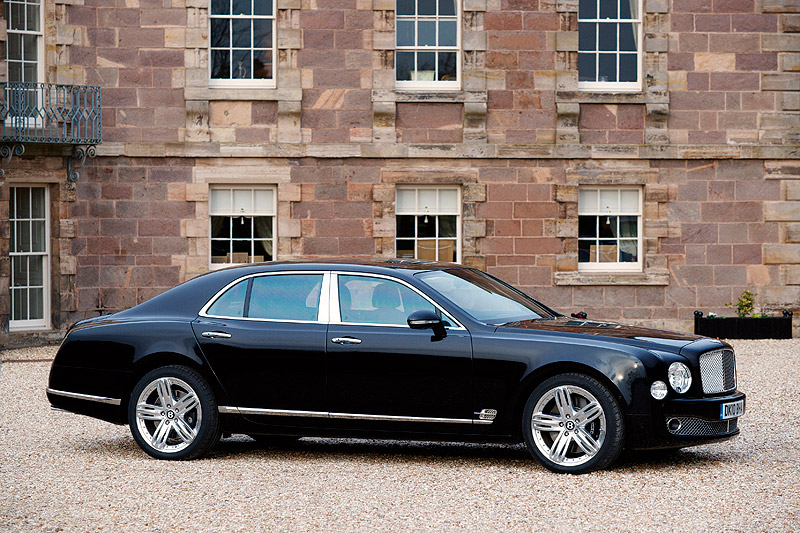
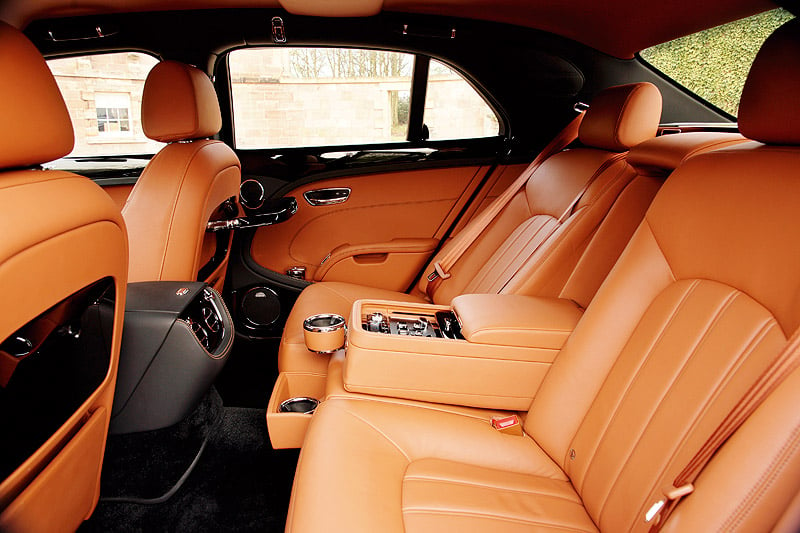
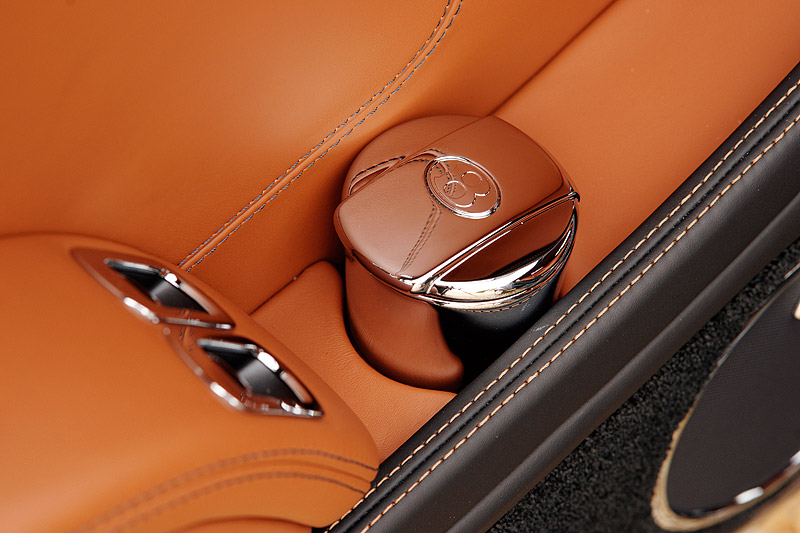
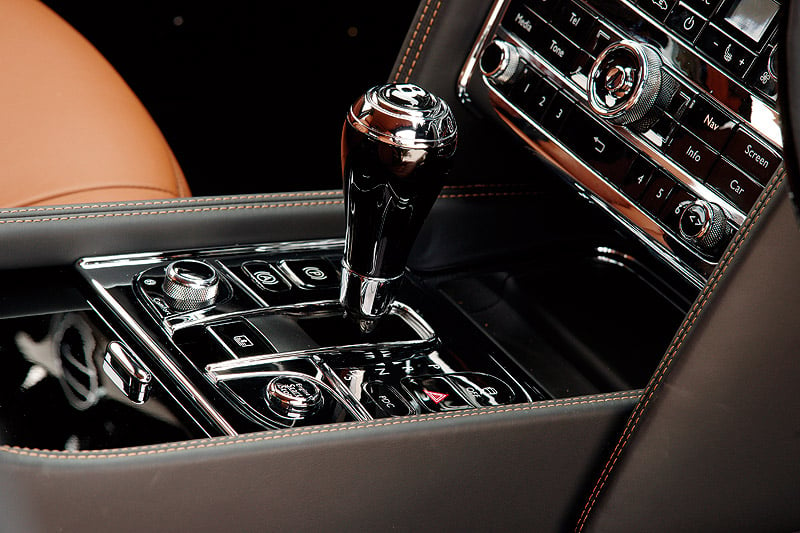
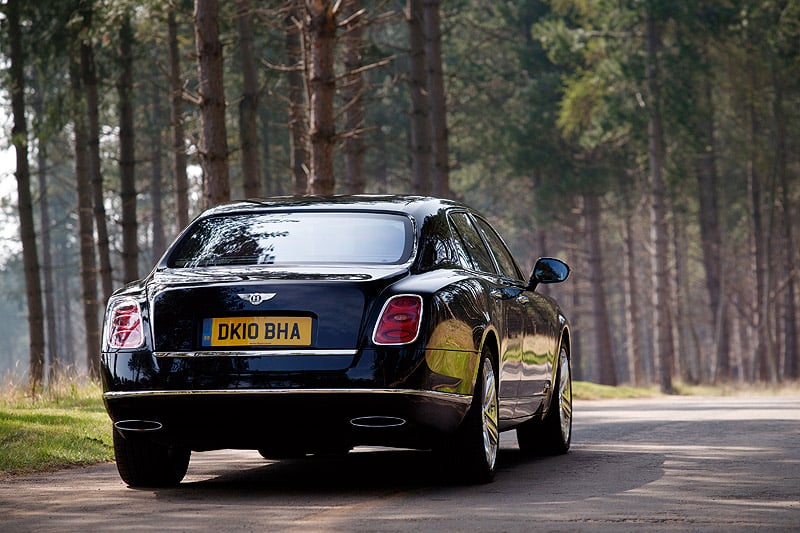
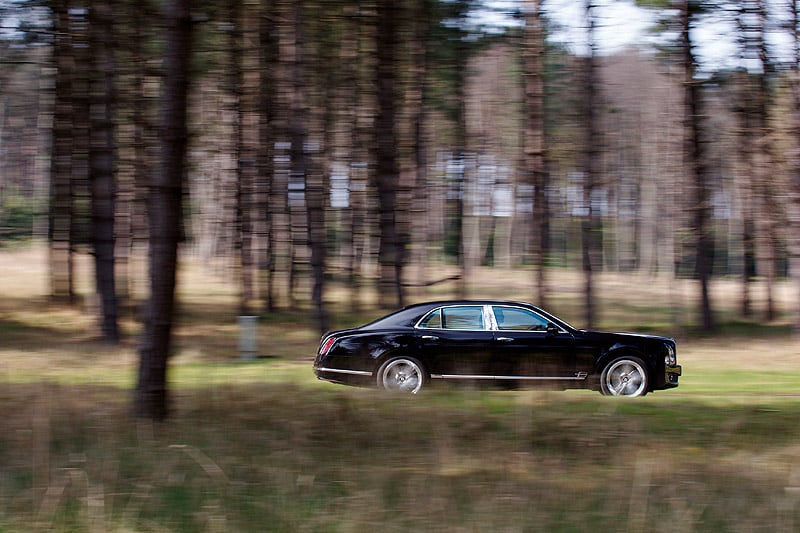
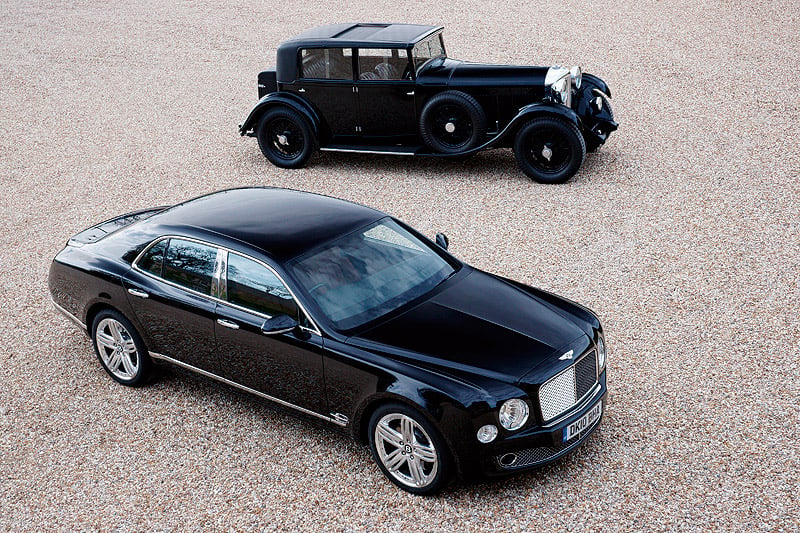
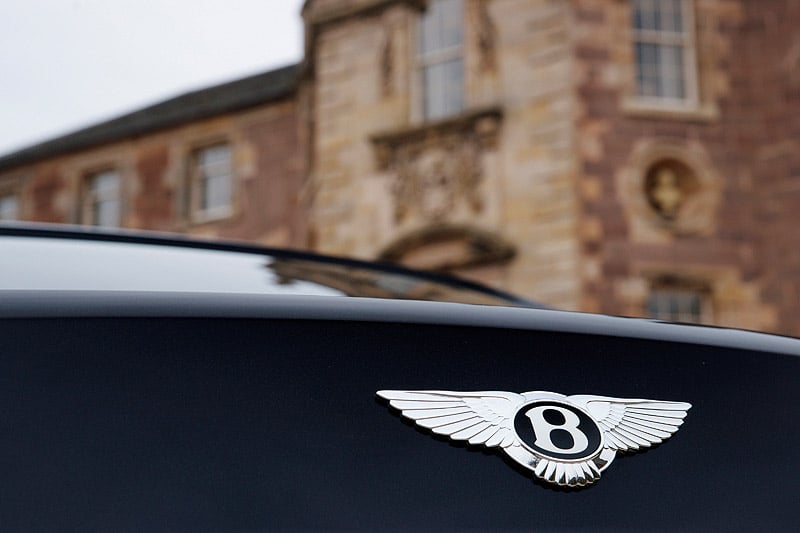
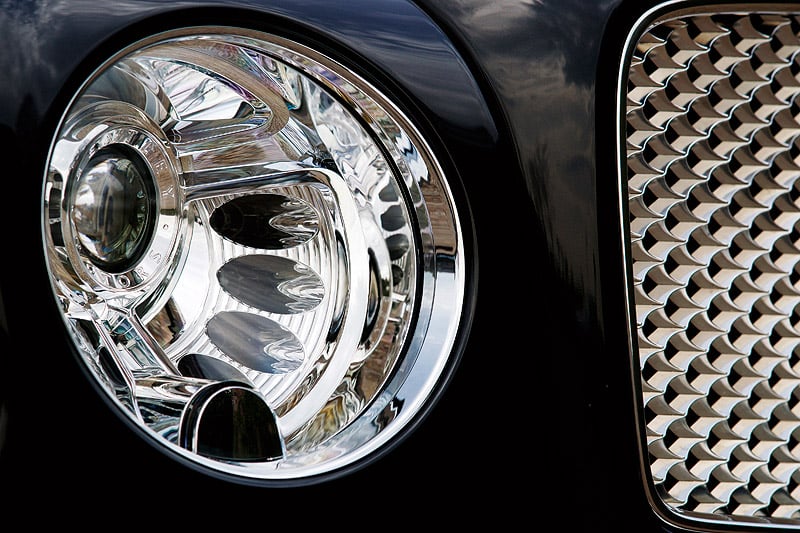
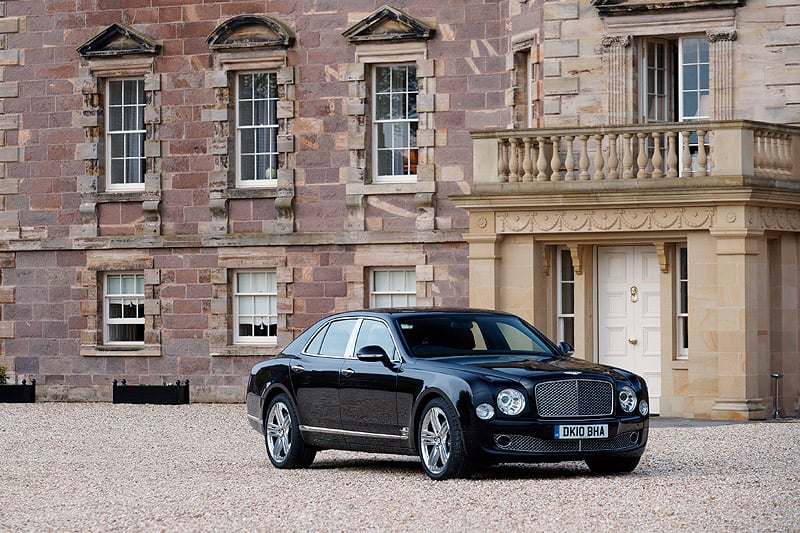
Text: John Simister
Photos: Bentley
ClassicInside - The Classic Driver Newsletter
Free Subscription!

























